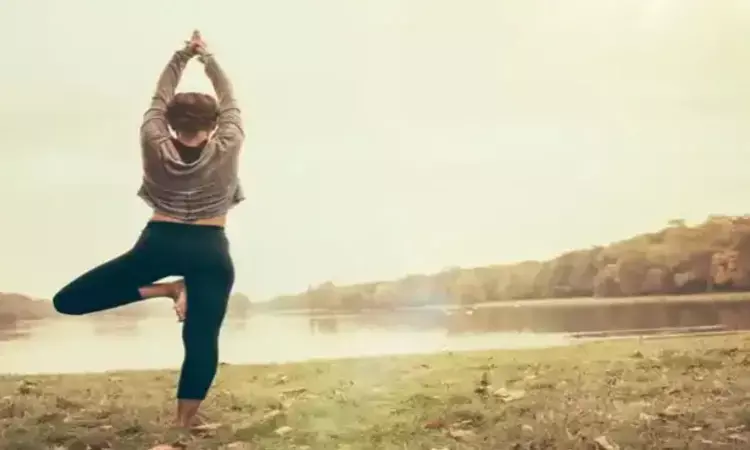- Home
- Medical news & Guidelines
- Anesthesiology
- Cardiology and CTVS
- Critical Care
- Dentistry
- Dermatology
- Diabetes and Endocrinology
- ENT
- Gastroenterology
- Medicine
- Nephrology
- Neurology
- Obstretics-Gynaecology
- Oncology
- Ophthalmology
- Orthopaedics
- Pediatrics-Neonatology
- Psychiatry
- Pulmonology
- Radiology
- Surgery
- Urology
- Laboratory Medicine
- Diet
- Nursing
- Paramedical
- Physiotherapy
- Health news
- Fact Check
- Bone Health Fact Check
- Brain Health Fact Check
- Cancer Related Fact Check
- Child Care Fact Check
- Dental and oral health fact check
- Diabetes and metabolic health fact check
- Diet and Nutrition Fact Check
- Eye and ENT Care Fact Check
- Fitness fact check
- Gut health fact check
- Heart health fact check
- Kidney health fact check
- Medical education fact check
- Men's health fact check
- Respiratory fact check
- Skin and hair care fact check
- Vaccine and Immunization fact check
- Women's health fact check
- AYUSH
- State News
- Andaman and Nicobar Islands
- Andhra Pradesh
- Arunachal Pradesh
- Assam
- Bihar
- Chandigarh
- Chattisgarh
- Dadra and Nagar Haveli
- Daman and Diu
- Delhi
- Goa
- Gujarat
- Haryana
- Himachal Pradesh
- Jammu & Kashmir
- Jharkhand
- Karnataka
- Kerala
- Ladakh
- Lakshadweep
- Madhya Pradesh
- Maharashtra
- Manipur
- Meghalaya
- Mizoram
- Nagaland
- Odisha
- Puducherry
- Punjab
- Rajasthan
- Sikkim
- Tamil Nadu
- Telangana
- Tripura
- Uttar Pradesh
- Uttrakhand
- West Bengal
- Medical Education
- Industry
10-second one-legged stance may help predict mortality risk: Study

Inability to stand on one leg for 10 seconds in mid to later life is tied to a near doubling in the death risk from any cause within the next 10 years, claims a recent study.
Brazil: An individual's ability to complete the 10-s one-legged stance (OLS) is independently associated with all-cause mortality and adds relevant prognostic information, states an article published in the British Journal of Sports Medicine. It is potentially beneficial to include the 10-s OLS as part of routine physical examination in middle-aged and older adults.
Physical fitness progressively declines along with the reduction in muscle strength/power, flexibility, balance, and body composition with aging. The combination of sarcopenic obesity and loss of flexibility and balance is detrimental to overall health in older adults. Balance tends to be reasonably preserved until the sixth decade of life when comparatively, it starts to diminish quickly. Balance assessment is not routinely incorporated in the clinical examination of middle-aged and older individuals and thus, the availability of simple, inexpensive, reliable, and safe balance assessment tools that could help predict survival would potentially be beneficial to health professionals evaluating and treating older adults.
Claudio Gil Araujo, Exercise Medicine Clinic-CLINIMEX, Brazil, and colleagues tried to assess whether the ability to complete a 10- s one-legged stance (10-second OLS) is associated with all-cause mortality and whether it adds relevant prognostic information beyond ordinary demographic, anthropometric and clinical data.
Investigators assessed the anthropometric, clinical, and vital status and 10-s OLS data in 1702 individuals (68% men) aged 51–75 years between 2008 and 2020. Log-rank and Cox modeling was used to compare survival curves and risk of death according to ability (YES) or inability (NO) to complete the 10-s OLS test. Overall, 20.4% of the individuals were classified as NO
Study data showed that,
• During a median follow-up of 7 years, 7.2% died, with 4.6% (YES) and 17.5% (NO) on the 10-s OLS.
• Survival curves were worse for NO 10-s OLS.
• In an adjusted model incorporating age, sex, body mass index, and comorbidities, the HR of all-cause mortality was higher for NO individuals
• Adding 10-s OLS to a model containing established risk factors was associated with significantly improved mortality risk prediction as measured by differences in −2 log-likelihood and integrated discrimination improvement.
Investigators conclude that within the limitations of uncontrolled variables such as the recent history of falls and physical activity, the inability to complete a 10-s OLS in middle-aged and older participants is related to a higher risk of all-cause mortality and, consequently, to a shorter life expectancy beyond age, sex and several other anthropometric and clinical variables.
The routine application of a simple and safe static balance test—10-s OLS—will add useful information regarding mortality risk in middle-aged and older men and women. It would provide rapid and objective feedback for the patient and health professionals regarding static balance, the authors wrote.
Reference:
BDS
Dr. Hiral patel (BDS) has completed BDS from Gujarat University, Baroda. She has worked in private dental steup for 8years and is currently a consulting general dentist in mumbai. She has recently completed her advanced PG diploma in clinical research and pharmacovigilance. She is passionate about writing and loves to read, analyses and write informative medical content for readers. She can be contacted at editorial@medicaldialogues.in.
Dr Kamal Kant Kohli-MBBS, DTCD- a chest specialist with more than 30 years of practice and a flair for writing clinical articles, Dr Kamal Kant Kohli joined Medical Dialogues as a Chief Editor of Medical News. Besides writing articles, as an editor, he proofreads and verifies all the medical content published on Medical Dialogues including those coming from journals, studies,medical conferences,guidelines etc. Email: drkohli@medicaldialogues.in. Contact no. 011-43720751


